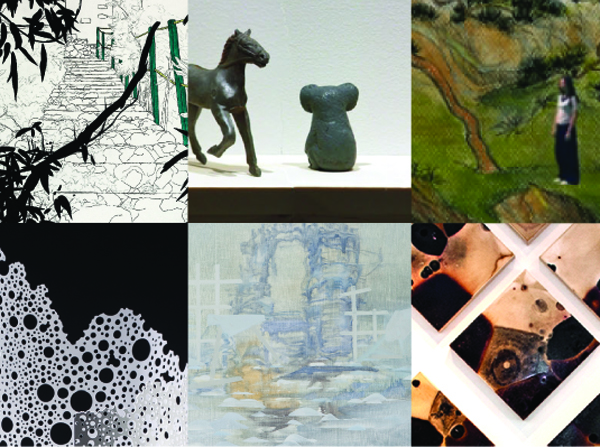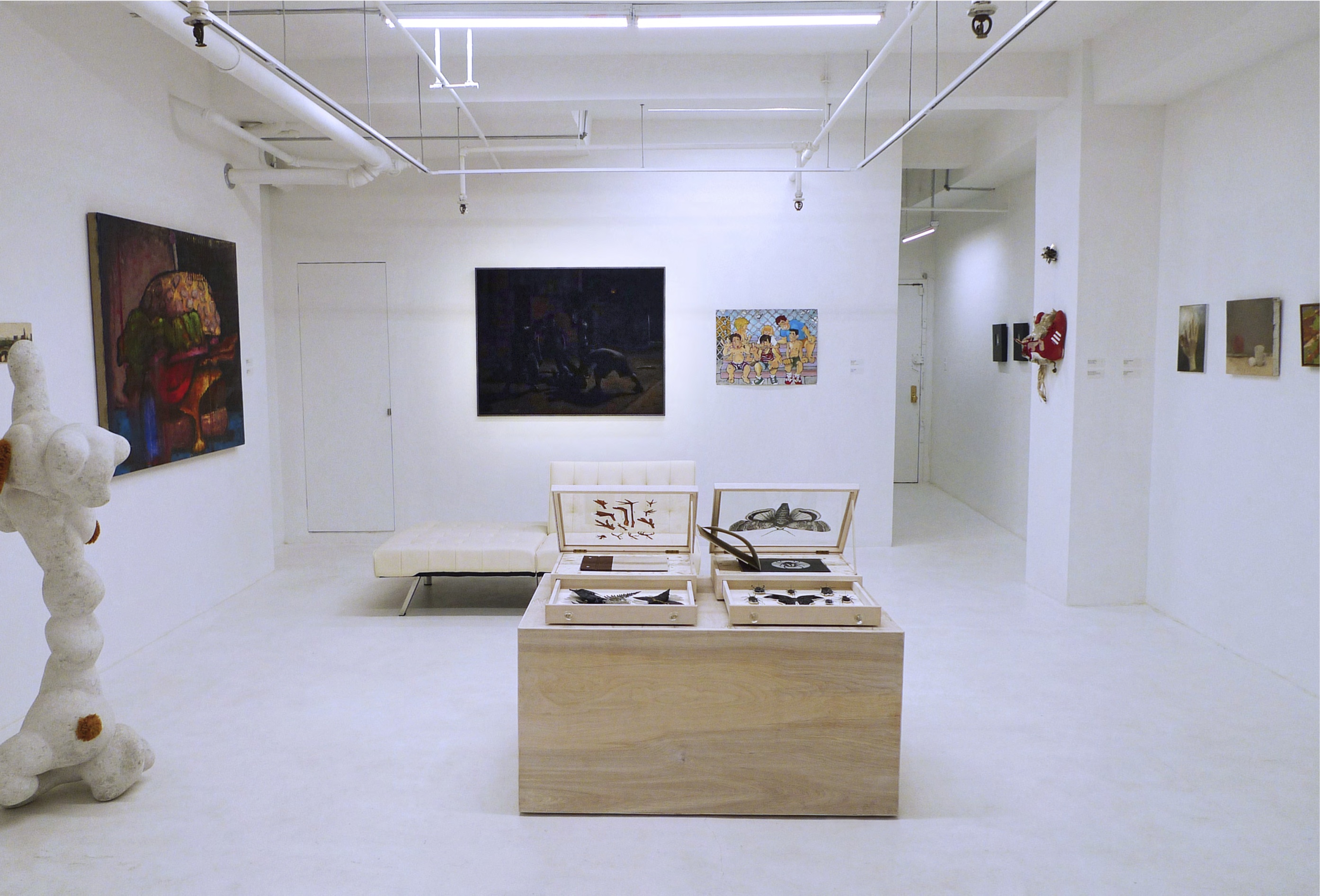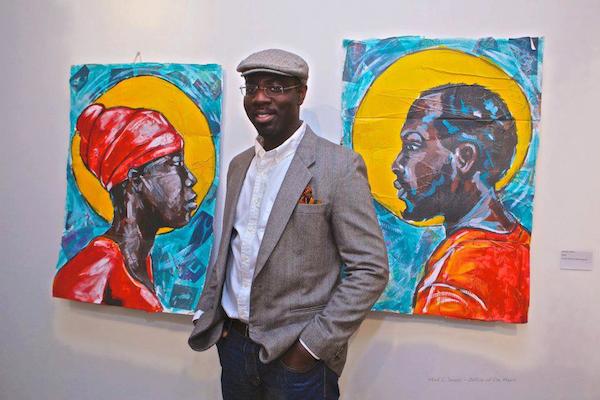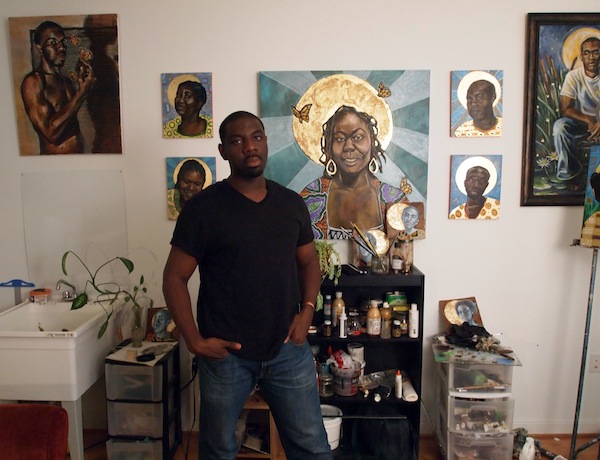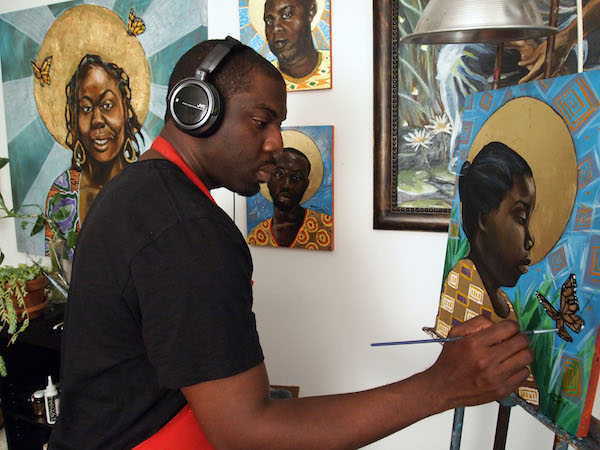Stephen Towns grew up in Lincolnville, South Carolina, a small community outside of Charleston. He earned a B.F.A from the University of South Carolina in Columbia, SC in 2004, and received the Ed Yaghjian Undergraduate Studio Award in 2003. Towns has displayed his work in group exhibitions in South Carolina and Maryland, notably at the Richland County Public Library and in the Piccolo Spoleto and Moja Arts Festival Juried Exhibitions. In 2003, he was awarded first prize in the Moja Arts Festival and his work was included in the Charleston County collection. In 2005, Towns had his first solo exhibition at the City Gallery in Charleston, SC.
Towns’ recent works are currently on display at SNAC in a two person exhibit with Benjamin Joseph Jancewicz called ‘Collaborative Effort.’ The show is up through Nov. 29 with an opening reception Friday, November 8. Towns was very open to a discussion of his process as a portrait painter and we discuss his work in an interview below.
Cara Ober: What issues do you explore through portraiture?
Stephen Towns: In small communities, like the one in which I was raised, people tend to know, know of, or be familiar with one another. Therefore, I question how well we actually know each other. Everyone has a story and is important in their own right. Unfortunately, our human nature does not allow us to remain aware of that, causing us to devalue others and ourselves. I seek to tell those stories in my work. In a sense, my work is an exploration into finding my own identity.
CO: Why do you live in Baltimore? When did you move here from Charleston? How does this city affect your work?
ST: I moved to MD in 2009 seeking access to a creative urban environment. I am inspired by the artistic creativity that is alive in Baltimore, but am also dismayed by the very visible decay and inequities of race and class in this city. Rather than incorporating the negative stereotypes and images of people of color that are pervasive in American culture, I have chosen to focus on more positive images. However, it can be challenging making political statements without directly addressing inequities. I know my work will evolve the more time I spend here.
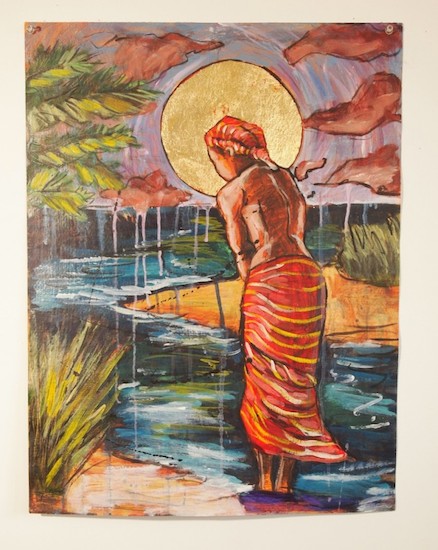 from the “Bathing In Meditation” series
from the “Bathing In Meditation” series
CO: Can you tell me more about the ‘Family Quilt’ series? How did it come about? What does it mean to you?
ST: Family Quilt explores the inter-connectivity of familial and ancestral relationships. I am interesting in the idea of the importance of one connecting to one’s ancestral roots and how does one do that if family history has been lost or unrecorded. The collection contains a series of portraits of my family members, both by blood and marriage. Each was personal explorations of my relationship to my family. The shapes and patterns in the painting were loosely based on African patterns, images of structural DNA, and fingerprints.
CO: What does portraiture allow you to do as an artist that other subjects don’t? What is it about portraiture that appeals to you?
ST: I work primarily in portraiture because I like to examine the nuances and expressions that make up a person’s face. At times, I feel it can be a bit easier to communicate feeling and emotion through facial expression. Though as mentioned before, it can be challenging in addressing political issues.
The sitter is nearly always placed in quiet, meditative environments. These portraits are not only glimpses of the individuals; they are also a reflection of myself and mirror my effort to attain a sense of self-esteem, self-knowledge and self-worth. In my portraits, I hope to create the opportunity for the viewer to channel a part of their being through my work.
CO: What are your favorite art materials and tools? What is your ideal way to work?
ST: I enjoy working on wood panels. They feel more permanent than painting on canvas. I also include a lot of metal leaf in my work. I am attracted to Medieval alter pieces and fascinated with the Catholic tradition of people declaring saints and miracle workers. I like to imagine how different the world would be if we had the ability to look at every person as a saint.
CO: How does your practice as a muralist and Community Coordinator at MICA affect your work and concept?
ST: I am a Program Coordinator in the Office of Community Engagement at MICA. I am able to witness and be a part of some of the dynamic work that faculty, staff, and students do at our institution. It also makes me aware of all of the voices and communities that want to be heard but tend not to.
CO: What is most challenging and rewarding about being a working artist in Baltimore?
ST: I’m inspired by the thriving arts community that is here. If you’re an artist and have an idea, your drive and determination can make it happen in Baltimore. There appears to be a freedom here that doesn’t exist in cities that have more financial resources and red tape.
*If you’d like to see Towns’ work in person, he will be exhibiting in “Collaborative Effort,” a Two-Person show with Benjamin Joseph Jancewicz at Station North Arts Cafe from November 3 – November 29, with an opening reception on Friday, November 8, 2013 from 5:30 – 7:30.
Photos (above) Photographer: Mark L. Dennis. Location: V.I.P. Award ceremony for Salvaged: A Waste of Materials, A Wealth of Art @ the Baltimore Public Works Museum. Works in background: (left) Eve, 2012. Mixed Media. 40″x35″ (right) Adam 2012. Mixed Media. 40″x35″
